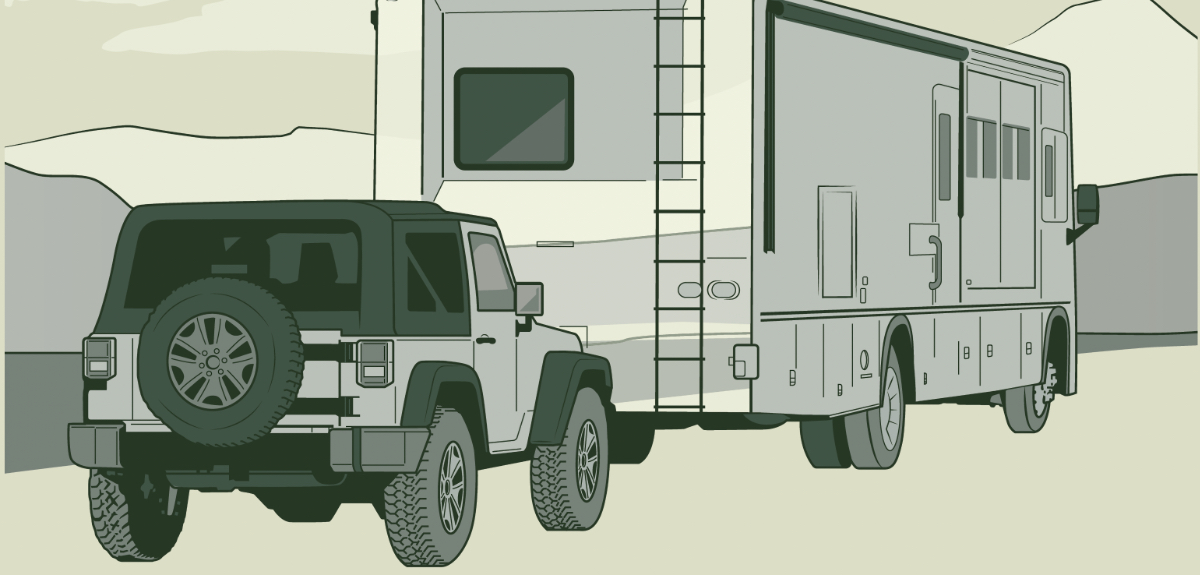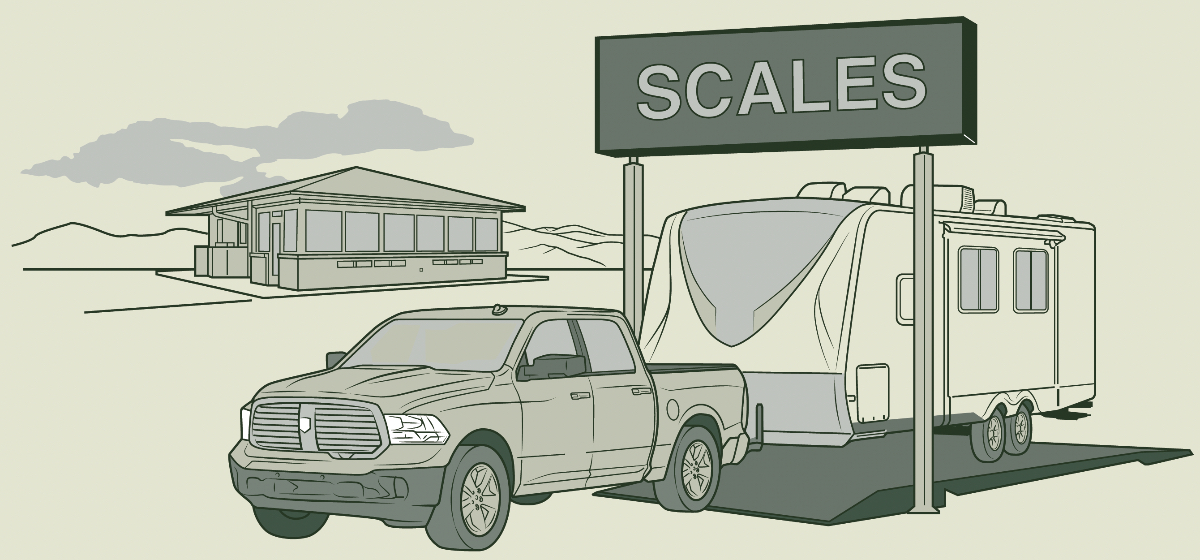Tech Q&A — April 2023
CO Alarms, Water-Heater Conversion, and a Malfunctioning Microwave
Image Caption:
Carbon Monoxide Alarms
Q: My wife and I bought a 2007 Forest River Georgetown Class A motorhome. I did not realize it did not have a carbon monoxide (CO) alarm in it. There are two smoke alarms and a propane alarm at the steps. I am looking at CO alarms at Home Depot. One has a sealed lithium battery unit with a 10-year warranty with an end-of-life chip and is UL listed. The other one is a hard-wired system. Both are made by Kidde. My question is, which one do you think is the best system to use?
—Dave West, New Smyrna Beach, Florida
A: If your RV is plugged into 120-volt AC power most of the time, the hard-wired one is probably better for your application. If your coach is often not plugged in, then the one with the sealed battery is probably the better choice.
Also, check the manufacturer and model number of the propane detector. Some detectors combine both propane and CO into one unit, and that could be the case with your motorhome. CO detectors were required in all new RVs as of 2005, so yours should have one.
Propane is heavier than air, so the stepwell location is good for the propane detector. CO is part of the air and rises with warm air, so ideally, a CO detector should be somewhere around waist height in the RV and close to the sleeping location. To do a safe job, have a separate CO detector installed as described above.
In any event, you may want to consider replacing the propane detector as well because they don’t last forever— the sensing element has a usable lifespan of less than 10 years (usually about 5–7 years)—so yours is probably due for replacement. The same age range also applies to smoke detectors, and one of the two your RV has may also be a CO detector combined in one unit. They’re fairly inexpensive and an important piece of equipment.
Diesel-Pusher Sways
Q: I own a 2017 Holiday Rambler Endeavor 40E on a Freightliner chassis with 30,000 miles on the odometer. While driving at slow speeds through an RV park or parking lot and going over speed bumps, the coach rocks—what I consider to be excessive—from side to side. I have even had to fashion a brace for the stackable washer and dryer because the washer and dryer once actually tipped out of the cabinet.
I have had the suspension checked at a diesel repair shop and have been told there is nothing wrong with the suspension. Is this a problem with the Freightliner chassis? Is this normal, or can something be done to correct this issue?
—Dan De Bojnis, Lucerne, California
A: Heavy vehicles such as yours are built on heavy-duty chassis, which share components with large trucks. As such, they have stiff suspensions and hard-riding tires that transfer road shocks to the vehicle and its occupants. Drivers of commercial vehicles tend to expect harsh rides (compared to passenger vehicles), but RVers tend to find harsh rides disconcerting.
Fortunately, the aftermarket has come up with a number of solutions. Roadmaster makes front and rear anti-sway bars designed to resist the side-to-side leaning (on the roll axis) of the coach on the chassis suspension. You didn’t mention which version of the Freightliner chassis you have. If you have the XC V-Ride version, Roadmaster offers part number 1209-140 for the rear. Installation time is estimated at one hour. It’s recommended that you try just the rear one, and if it cures the ride issues, you’re done. If you find that more improvement is needed, the front bar (part number 1209-139) may be added later. Parts and labor for either end should work out to around $1,000 total.
Water Heater Conversion
Q: We have a 2016 Grand Design Reflection fifth-wheel and would like to know if the water heater can be converted to a tankless system.
—Judith Kelly, Reno, Nevada
A: You can’t convert an existing tank-type water heater to a tankless system, but you can remove it and install a tankless system. It’s not cheap to do because most such tankless water heaters are more costly than standard RV water heaters. Although the installation can be easy, you should consider it carefully. You’ll have to decide whether you want an electric one or a propane heater. If you are always connected to campground power, you might choose electric (it uses a lot of power) or else go with propane. They only come one way or the other.
A tankless continuous water heater such as a Truma AquaGo is easy to have installed in place of a conventional RV water heater. It fits the same space and just requires the propane, plumbing, and 12-volt wiring to operate, and in some cases, the plumbing and wiring are almost direct swaps. The propane line will likely need a bit of rerouting, and that’s best left to a professional mechanic.
Microwave Cuts Out
Q: My Thor Miramar Class A motorhome is just three years old. The High Pointe convection microwave starts and runs for about five minutes, then shuts down all power to the microwave. It does not trip the circuit breaker in the power panel. Then after five minutes of nothing, the power comes back. What do you suggest?
—Ralph Campbell, Palm Bay, Florida
A: Most microwaves have an internal fuse, but the one you have may have an internal circuit breaker that trips and resets. Also, the magnetron unit may be going bad. Click here for more information on troubleshooting this issue.
When it shuts off, measure the voltage at the outlet it plugs into. If there’s no power there, the problem is in the motorhome wiring. If there is power in the outlet, the problem is within the microwave oven. You may want to take it to an appliance repair shop for further diagnosis.
Hard-Starting Generator
Q: We have a 2022 Winnebago Vista Class A motorhome with an Onan generator model 5.5 HGJAB that runs on gasoline and has 60 hours on it. The problem began when temperatures went below 40°F, and the generator became hard to start. Any suggestions?
—David and Mary Lou Stroup, Tulsa, Oklahoma
A: Because it’s so new, I doubt that old gasoline in the carburetor is the problem like it is with so many older units that I hear about. I suspect that the electric choke isn’t operating properly, or there’s some other carburetor problem. This should be covered under warranty. The Cummins Generator Center locator shows there’s one in Tulsa. I recommend taking it in to get it checked.
A Five-Watt Solar Panel?
Q: My 2007 Class A Fleetwood Bounder came with a five-watt solar panel that is supposed to trickle charge the engine battery. However, it does not, even though the red indicator light (built into the inside air-conditioning grate) is on, indicating it is charging. The Batteries Plus store’s tech said that it must be between 20 and 50 watts to charge.
So, with the current five-watt solar panel being obsolete and not trickle charging, the engine battery: 1. Are you able to know if it has a built-in charge controller/voltage regulator? 2. If so, can I upgrade to a 20-watt solar panel (solar panel only) with the existing wiring harness and charge controller? If not, the 20-watt solar panel I am planning to purchase has a built-in MPPT charge controller; would I have to remove any control boxes the existing system has and be plugged into the existing wiring harness that is connected to the five-watt solar panel without any problems?
—Rick Gomez, Wilton, California
A: I think you will find that the five-watt panel does not have a charge controller. The reason for this is that a tiny five-watt charge (or less when the sunlight is weak) is readily absorbed by the engine-starting battery without the need for a controller. Motorhomes typically have a number of small parasitic loads that draw down the batteries, so even if the five-watt panel is working, it’s probably not enough to maintain a full charge.
You can verify that there’s no charge controller in the wire by simply testing the wire for continuity with an ohmmeter. If the wire flows (near zero ohms), then there’s nothing in the circuit. I recommend installing an additional panel with the controller to maintain the coach batteries, as these also have parasitic draws and discharge over time.
Sanitizing Freshwater Tank
Q: We have a 2021 Newmar Dutch Star Class A motorhome with a 100-gallon freshwater tank. I want to sanitize it with diluted bleach. My question is: Where do I dump all that water/bleach afterward? Will it harm my grass? Will it bleach my driveway?
—Lewis Lefer, Lakewood Ranch, Florida
A: Chlorine dissipates after a few days and rises out of the water as it turns into a gaseous state. This is why you have to regularly add chlorine to a swimming pool. The warmer it is, the faster this occurs. Use about 1/4 cup of bleach per 15 gallons of water. Pour some water from the tank into a cup and smell it. If the odor is weak, it shouldn’t hurt the pavement. Keep in mind that city tap water is chlorinated, and you wash your car and water the lawn with it. Grass is more delicate, so if you are using a higher dosage of chlorine than city water does, allow it to drain on the pavement.
Tires During Storage—Question
Q: I read the “Tires During Storage” letter in the January issue. I have a 30-foot Class C motorhome with automatic leveling jacks, I’m wondering if using the jacks to lift the RV up so the tires are off the concrete would be acceptable, or could that cause damage to the jacks and leveling system?
—Andrew Moothart, Vacaville, California
A: Most power leveling systems are designed for just that, leveling, and the manufacturers advise against trying to lift the tires off the ground with them. Please refer to the instructions that came with the coach or obtain them online at the website of the leveling system manufacturer.
I recommend supporting the weight evenly with heavy-duty jack stands rated for the loaded axle weights of your coach. Leaving the hydraulic rams extended and exposed to the weather also can result in rust and corrosion on the shafts.
Refrigerator Issue
Q: We have a problem with the refrigerator in our 2009 Itasca Ellipse (by Winnebago) 40-foot diesel pusher. The refrigerator is a Dometic side-by-side, model number NDA1402. The digital reader inside the fresh food section at the top prints out “Call ER 13.” The problem is that the freezer section freezes up and icicles form on the right side, and it requires manual defrosting every 2–3 weeks.
The Dometic owner’s manual listing for that code says, “Heating element in drain pipe faulty.” The servicing dealer says that the corresponding part number, 3850675012, is no longer available. Is this the correct part to fix the problem, and if so, can you provide any help in finding a replacement or usable part from another manufacturer? The unit is fine otherwise.
—David Cohron, Stuarts Draft, Virginia
A: That appears to be the correct number, and yes, it is discontinued. Try this supplier: RV Part Shop (877-223-0343). They show online they can have it for you in several weeks. There are also a number of RV salvage yards that could possibly have what you need.
RV Generator Problem
Q: We have a 2006 Gulf Stream BT Cruiser on a Chevy chassis. It has a Guardian generator. The generator will not keep running unless I feather the choke to keep it running. Do you have any advice to fix this?
—Jim Galbreath, Lakewood, Colorado
A: You didn’t mention which model number generator you have, but from the specs information I have available it appears to be a 4-kW gasoline model made by Generac. Typically, what happens is the gasoline (particularly with 10% ethanol) deteriorates when sitting unused for a while and partially clogs the jets and passages inside the genset carburetor. (There was also an optional Onan propane genset available that wouldn’t suffer from this fuel problem.)
Running the generator with the choke partially on adds additional fuel, which sort of offsets the lack of fuel getting into the combustion chamber. The cure usually entails taking the carburetor apart and soaking it in carb cleaner, and reassembling it with fresh seals and gaskets. Many repair shops prefer to replace the carb; you can find inexpensive replacements online.
RV Window Repair
Q: We have a 32-foot Triple E Commander A3202FB Class A motorhome. I’m looking for a company on the West Coast that repairs or replaces double-glazed RV side windows.
—Vernon, British Columbia, Canada
A: A previous article on the subject at RV.com references RV Glass Solutions, which has full-service RV glass locations in Coburg, Oregon, plus Arizona, Florida, and Indiana.
Reader Comment: How to Extend AGM House-Battery Life
Q: This is in reference to the January 2023 inquiry from David Waye, “Extending AGM House-Battery Life,” in his Winnebago Journey. My 2016 Winnebago Journey 36M came from Winnebago with six 12-volt AGM batteries and a 2,500-watt Magnum inverter that has a smart charge function. I just keep it plugged in when it is in storage. I still have the original batteries, and they are working great after more than six years. I forgot to plug it in one time, and the house batteries were drained in about three days.
The culprit was the inverter; it draws voltage even if there are no appliances, lights, fans, etc., left on. The inverter should always be turned off if it is not plugged in when in storage.
I am curious about one thing. When the batteries were drained, the generator wouldn’t start. It’s an 8-kW diesel generator that cranks off the chassis batteries, and the chassis batteries were fully charged. Once I charged the house batteries, the generator fired right up. Any idea why dead coach batteries would cause the generator not to crank?
I appreciate your Tech Q&A section in RV Magazine. I always read it first when I get my magazine and usually read it over again because I enjoy the subject matter and find it very helpful and informative. Thank you for your great service to the RV community.
—Dennis N. Clute, Burleson, Texas
A: Thanks for writing and for the kudos, Dennis; I enjoy helping people.
Winnebago has some very helpful free information available on the company website, including wiring diagrams. If you look at page 8 of the diagram of your coach found here, you will see that the generator gets its starting power from the coach battery bank, not the chassis (engine starting) batteries, unless the auxiliary start solenoid is activated.
I hope this answers your question.
Have a Question?
Looking for answers on all things RV, including systems, engines, accessories, or construction? Submit it to our expert at [email protected], and it may be selected for publication. You must include your name, city and state, phone number (will not be published), and type and model of your RV.




